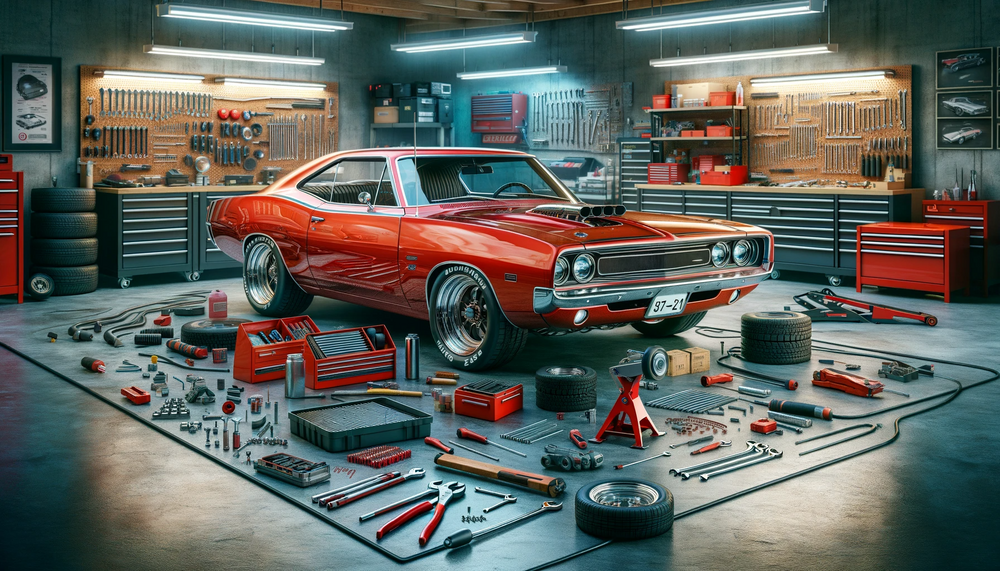How You Can Avoid These Common Soundproofing Mistakes in Vans
Soundproofing your van can make it a much quieter and more comfortable space. Whether you're looking to reduce road noise, improve the sound quality of your audio system, or create a serene environment, soundproofing is a great solution. However, many people make common mistakes that can reduce the effectiveness of their efforts. Knowing what to avoid can save you time, money, and frustration.
One of the biggest mistakes people make is choosing the wrong materials. Not all soundproofing products are created equal, and using the wrong ones can lead to disappointing results. Another common error is skipping essential preparation steps. Properly preparing the surfaces of your van is crucial for the soundproofing materials to adhere correctly and work effectively.
Incorrect installation techniques are another pitfall. Even the best materials won't do their job if they're not installed properly. Lastly, many people think that once the soundproofing is installed, the job is done. Ignoring ongoing maintenance can lead to issues down the line and diminish the benefits of your hard work.
Choosing the Wrong Materials
One of the most common mistakes in soundproofing a van is picking the wrong materials. Not all soundproofing products provide the same level of noise reduction or are suitable for every part of your van. Selecting the wrong materials can make your efforts ineffective and a waste of money.
For example, some people choose cheap foam or lightweight materials that don’t block sound well. These might be easy to install, but they won’t provide much noise reduction. Instead, look for dense, high-quality materials specifically designed for sound deadening, like butyl rubber mats or mass loaded vinyl (MLV).
Another common error is using only one type of material. Effective soundproofing usually requires a combination of materials to block, absorb, and dampen sound. For instance, you might use sound deadening mats on the floor and walls to reduce vibrations, and MLV to block noise from entering the cabin.
It’s also important to consider the adhesive properties of the materials. Some soundproofing products come with adhesive backing that makes installation easy. Others require additional adhesive spray or double-sided tape. Always check the manufacturer’s recommendations to ensure you’re using the right adhesive method for maximum effectiveness.
Skipping Essential Preparation Steps
Preparation is key to successful soundproofing, yet many people skip this critical step. Without properly preparing your van, even the best materials won't stick or perform as they should.
Start by cleaning the surfaces where you’ll apply the soundproofing materials. Dirt, grease, and dust can prevent the adhesive from sticking properly. Use a mild cleaner to remove any grime and allow the surfaces to dry completely before applying the materials.
Next, remove any existing panels, seats, or carpets that might be in the way. This gives you direct access to the metal surfaces where the sound deadening materials need to go. It might take extra time, but it ensures that you can cover all critical areas effectively.
Another essential step is to measure and cut the soundproofing materials before applying them. This reduces waste and ensures a more precise fit. Cutting the materials to the right size ahead of time also makes the installation process go more smoothly.
By preparing the surfaces and your materials properly, you set the foundation for a successful soundproofing project. This prep work might seem tedious, but it makes a huge difference in the effectiveness and longevity of your sound deadening efforts.
Incorrect Installation Techniques
Incorrect installation techniques can ruin even the best soundproofing plan. It’s crucial to follow the right steps to ensure that the materials perform as expected. Here are some common mistakes to avoid during installation.
First, failing to press the materials firmly against the surfaces can lead to air bubbles or loose sections. Using a roller helps ensure the materials adhere properly and remove any trapped air. Firm pressure is essential for achieving maximum sound deadening.
Another mistake is overlapping materials incorrectly. Overlapping can cause uneven surfaces, which affects both the look and functionality of your soundproofing. Always follow the manufacturer’s guidelines on how to lay the materials. Cutting and fitting pieces precisely is key for a smooth installation.
Skipping edges and corners is also a common issue. These areas can let in a lot of noise if not sealed correctly. Make sure to cover all parts of the van, including hard-to-reach spots like corners and behind panels. Sealing every inch maximizes your soundproofing efforts.
Incorrect installation techniques can compromise all your hard work. By paying attention to details, taking your time, and following the right methods, you can achieve a much quieter van.
Ignoring Ongoing Maintenance
Ignoring ongoing maintenance is a big mistake when it comes to soundproofing your van. While initial installation is crucial, maintaining your soundproofing materials ensures they continue to perform effectively over time.
Regularly check the condition of the soundproofing materials. Look for signs of wear and tear, such as peeling edges or damaged sections. Address these issues promptly by re-applying adhesive or replacing worn-out materials. Regular inspections help you catch problems before they get worse.
Keep your van clean. Dirt and grime can build up on soundproofing materials, affecting their performance. Vacuum the interior and wipe down surfaces to keep everything in good condition. Clean materials adhere better and last longer.
Also, make sure to check for any new noise sources. Over time, wear and tear on the vehicle itself, such as loose parts or seals, can introduce new noises. Address these as soon as possible to maintain your quiet environment. Regular upkeep of your vehicle's mechanical parts helps keep noise levels down.
Ongoing maintenance ensures that your soundproofing efforts pay off in the long run. Don’t neglect this part of the process if you want to keep your van quiet and comfortable.
Conclusion
Soundproofing your van can make your travels much more enjoyable, but only if done correctly. Choosing the right materials, properly preparing your van, using correct installation techniques, and committing to ongoing maintenance are all essential steps. Skipping any of these elements can lead to disappointing results and wasted effort.
Proper soundproofing involves attention to detail and a bit of patience. By avoiding these common mistakes, you’re more likely to achieve a quiet, comfortable environment inside your van. Whether you’re traveling cross-country or using your van for daily commutes, reducing noise can make a big difference in your comfort and peace of mind.
If you’re ready to start your soundproofing project in Denver or need high-quality sound deadening materials, visit B-Quiet. We provide everything you need to create a quieter, more enjoyable space in your van. Make your next trip a peaceful one with B-Quiet!













